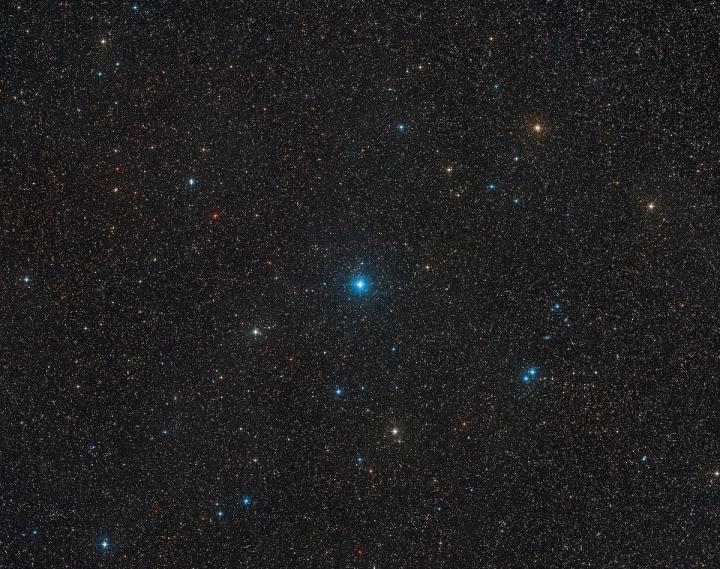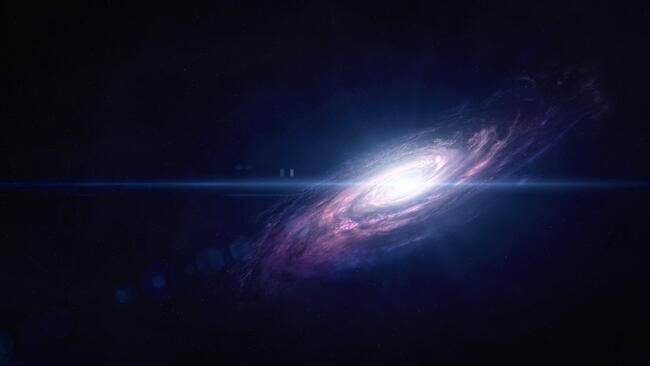In recent years, astronomers have discovered black holes that the media will say are “close” to Earth. Is there anything to concern us about this scary-sounding news? The truth about black holes is more fascinating than the hype. And let’s briefly explore it.
Black holes are headline-grabbers and objects of public fascination, but they’ve had very bad “PR” – which makes people think a black hole goes around sucking everything into them. Actually you’d have to venture right up to a black hole’s edge, its so-called “event horizon,” in order to be forced inward. At any sort of normal distance, they’re not hazardous at all.
Say our Sun collapses to be a black hole later today. To do that, it simply needs to shrink smaller and smaller until the “escape velocity” at its gassy surface, the velocity you need in order to leave it—which is currently 360 miles per second—climbs all the way up to the speed of light, which is 186,282 miles per second. To achieve that kind of escape speed you’d need to boost its surface gravity by making it collapse into a ball just two miles wide.
For Earth to achieve a black hole’s escape velocity (the speed of light) our planet would have to shrink down to be only the size of a marble. Obviously, that’s not going to happen.
But say it did happen. Say the Sun collapses and becomes a black hole. Then do we get pulled in? Not at all. Its overall gravity stays the same because its mass hasn’t changed. Sure, at its new surface, nothing could escape, not even light, which is why it’s now a black hole. But here at Earth’s distance of 93 million miles away, we feel the same solar gravity we always have, and nothing changes at all. We keep orbiting it just as we did before. We’re not pulled toward it in the slightest.
Only very heavy and old stars, typically weighing more than a half dozen Suns, have enough mass to self-collapse from their own gravity. Then they can become a black hole.
Read more about black holes in my post, Where in Space Are We Headed?

The bright blue light in the center is HR 6819, a triple system with two stars and the closest black hole to Earth. Credit: ESO.
What is the Closest Black Hole?
1. Cygnus X-1
One of the nearest black holes is the Cygnus X-1 in the “Swan” constellation, located about 6,000 light-years away. We could never see that black hole, of course, since it neither emits not reflects any light, but we do see its gravitational effects as it pulls on its surrounding objects; in this case, its companion is visible star, an ordinary heavy sun that orbits it once a week.
The way a black hole tugs at surrounding objects shows us the mass of the unseen object. The fact that it also emits pulses of X-rays is another key bit of evidence, since that’s what should happen if tiny atom-sized bits of matter are spiraling inward. And its X-ray pulsations fluctuate rapidly, which only a very small object could display. So, no, we can’t see it, but we know it’s massive, tiny, emits X-rays, and changes its intensity very quickly and therefore it must be super-tiny. In a court of law it would be “case closed”—it’s a black hole.
2. HR 6819? (TBD)
Some scientists claimed in May of 2020 that they found another black hole—at just 1,000 light year away—in the dim, far-southern constellation of Telescopium in the star system HR 6819. We can see this star system with the naked eye, though it’s too far south to ever rise for U.S. observers. However, from the Southern Hemisphere, during wintertime, it appears as a brilliant blue star gleaming overhead.
HR 6819 is actually a two-star system with two stars that are so near that they appear as one. Scientists wanted to know why the pair of stars was orbiting each other in an odd way, and suggested a black hole and one star orbited each other while the second star moved in a wider orbit.
However, in 2022, some astronomers questioned whether it was truly a black hole causes this unusual orbit, theorizing that the two stars may orbit each other oddly because one star stripped the mass of the second star, making one more massive than the other. Time will tell which theory is correct.
Even if a black hole were as close as the Sun, rest assured that it would not affect us. At least, it’s not information that would arouse the attention of your insurance company.











Comments